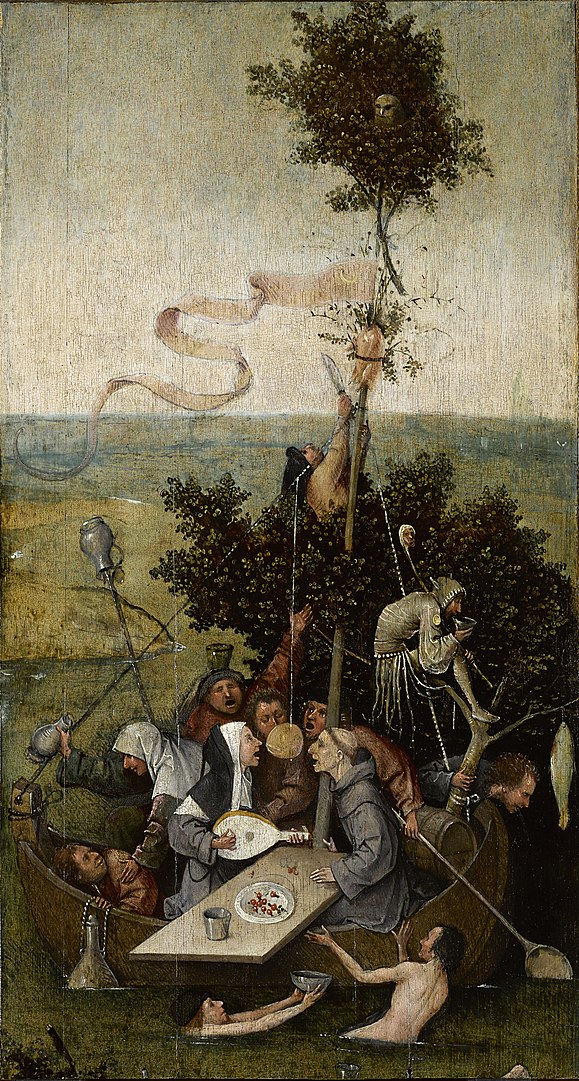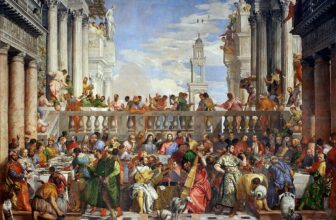
The Ship of Fools Meaning, and Metaphor
For centuries, art has been a mirror reflecting the deepest truths of human nature, society, and the human psyche. Few paintings embody this as hauntingly and symbolically as “The Ship of Fools,” a famous work by Hieronymus Bosch. This unsettling yet captivating masterpiece brims with allegory, hidden meanings, and a rich tapestry of historical, philosophical, and psychological insights. But why is it called “Ship of Fools”? What is the main idea behind this mysterious painting? And how has it come to be linked with mental illness? Let us embark on an exploration of this enigmatic work, uncovering its significance across time.
The Origins of the “Ship of Fools” Concept
The term “Ship of Fools” predates Bosch’s painting, originating from classical and medieval literary traditions. It was popularized in the late 15th century by the German humanist and satirist Sebastian Brant in his work Das Narrenschiff (“The Ship of Fools”), published in 1494. This satirical allegory describes a ship filled with foolish and sinful passengers adrift without a capable captain, symbolizing a world governed by folly rather than wisdom.
Brant’s Ship of Fools was a scathing critique of human vices, religious hypocrisy, and societal corruption. It reflected the anxieties of an era on the brink of the Reformation, where ignorance and moral decay seemed to steer humanity toward ruin. Bosch, ever the keen observer of human folly, took inspiration from Brant’s text, bringing its chaotic vision to life on canvas.
The Meaning of Bosch’s “Ship of Fools” Painting
Painted between 1490 and 1510, Bosch’s Ship of Fools presents a bizarre and grotesque scene of a boat filled with revelers and misfits, drifting aimlessly in open waters. Unlike a noble vessel on a purposeful voyage, this ship carries passengers consumed by gluttony, drunkenness, and pleasure, with no sign of leadership or direction.
A monk and a nun, perhaps a critique of the corruption in the clergy, are among the passengers, indulging in the feast rather than offering guidance. One figure plays a lute, others sing foolishly, and a man dangles from a mast while trying to reach a suspended piece of food, an absurd and tragic pursuit of material desires. Meanwhile, an owl, often associated with wisdom but also with doom, perches ominously in the background, a silent witness to humanity’s self-imposed blindness.
At the heart of Bosch’s Ship of Fools lies the notion that humanity is on a senseless voyage, indulging in vice and ignorance rather than seeking enlightenment. The painting warns of a world steered not by reason or virtue, but by recklessness and folly.
The Main Idea Behind the “Ship of Fools”
The painting’s core message is a profound meditation on the consequences of human foolishness. By depicting a rudderless ship, an emblem of society, the artwork suggests that people are often more concerned with immediate pleasure and self-indulgence than with wisdom, morality, or responsibility.
Bosch’s painting aligns with broader themes in his work, which often critiques the moral corruption of his time. The absence of a captain implies a lack of divine or rational guidance, leaving mankind to drift toward inevitable disaster. It is a warning against decadence, ignorance, and moral decline.
The Legend of the “Ship of Fools”
The imagery of a ship filled with fools adrift at sea also has roots in an older, eerie legend. During the Middle Ages, there were accounts, some exaggerated, some possibly true, of cities expelling the mentally ill and the socially undesirable by placing them on boats and sending them away. These so-called “ships of fools” were left to wander aimlessly, making them a grim metaphor for how society treated those deemed mad or unfit.
This legend, whether fact or fiction, reinforced the idea of a world where folly and disorder reigned. The ships symbolized both a literal and metaphorical exile, madness and moral decay cast adrift without redemption or understanding.
The “Ship of Fools” and Mental Illness
One of the most fascinating interpretations of Bosch’s Ship of Fools is its connection to mental illness. The painting has been linked to historical perceptions of madness, particularly how medieval and Renaissance societies viewed mental illness as a divine punishment or an affliction caused by sin.
The chaotic, irrational behavior of the passengers can be seen as a depiction of psychological instability, emphasizing how societies often ignored, ridiculed, or mistreated those who did not conform to norms. The legend of “ships of fools”, whether literal or allegorical, echoes a dark past where those suffering from mental illness were abandoned rather than treated with care and understanding.
Over time, the “Ship of Fools” became a broader metaphor for insanity, moral blindness, and the human tendency to ignore the perils ahead while indulging in fleeting pleasures. It highlights how, without wisdom and direction, individuals, and societies, risk drifting into chaos and self-destruction.
The Enduring Relevance of the “Ship of Fools”
Bosch’s Ship of Fools remains powerfully relevant in modern times. In an era of misinformation, political turmoil, and societal excess, the image of a rudderless ship carrying deluded passengers feels eerily familiar. It serves as a reminder that, without critical thought and ethical leadership, societies can fall into the same patterns of folly, repeating the mistakes of the past.
The painting’s haunting message also speaks to personal struggles. It invites self-reflection, asking each viewer: Are we navigating life with purpose, or are we merely passengers on a ship of fools, blind to our own missteps?
Where is the The Ship of Fools Painting Museum Location
This Ship of Fools is currently housed in the Louvre Museum in Paris, France. Bosch’s The Ship of Fools is often interpreted as a moral critique of society, illustrating the consequences of indulgence, ignorance, and lack of direction. The painting reflects themes from Das Narrenschiff (The Ship of Fools), a satirical book by Sebastian Brant published in 1494, which criticized the corruption and foolishness of human behavior.
Visitors to the Louvre can find The Ship of Fools in the museum’s collection of early Netherlandish paintings, alongside works by other influential painters of the period. Given its intricate symbolism and allegorical content, the painting continues to captivate art enthusiasts and historians alike.
For those interested in seeing The Ship of Fools, the Louvre Museum is open most days of the week, and tickets can be purchased online or at the entrance. The museum also offers guided tours that provide insights into Bosch’s masterpiece and its historical significance.
The Eternal Voyage of the Ship of Fools
Bosch’s Ship of Fools is more than just a work of art, it is a timeless allegory of human folly, a mirror held up to society’s moral failures, and a chilling commentary on the treatment of the marginalized. Its unsettling imagery forces us to confront uncomfortable truths about ourselves and our world.
Whether seen as a critique of religious corruption, a metaphor for a misguided society, or an eerie reflection on mental illness, Ship of Fools continues to captivate, disturb, and provoke thought. Like the aimless boat in the painting, humanity remains on an uncertain journey, one that, without wisdom, compassion, and self-awareness, may lead to ruin. But perhaps, by recognizing our own foolishness, we can steer our course toward enlightenment rather than oblivion.




